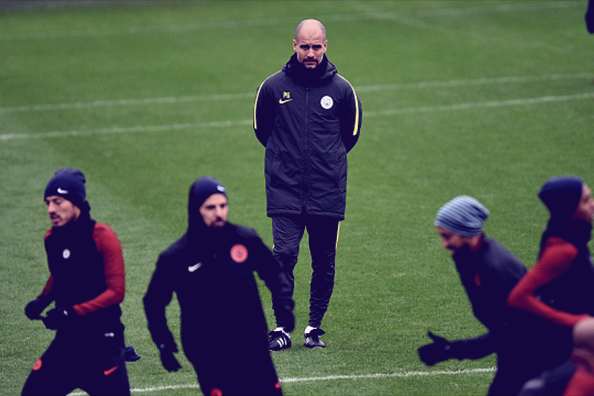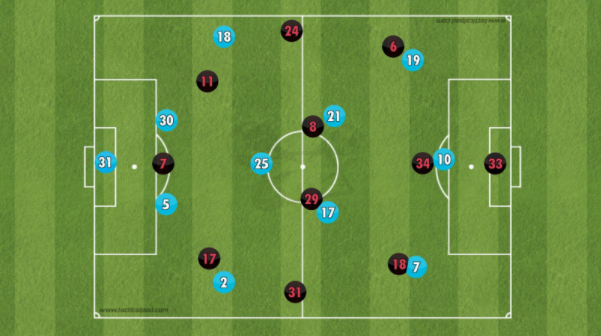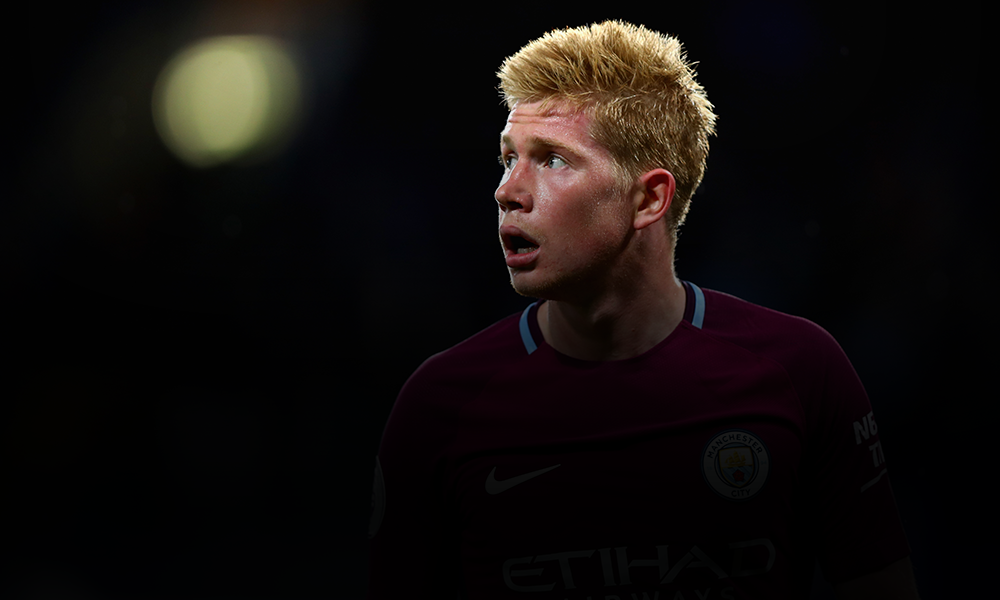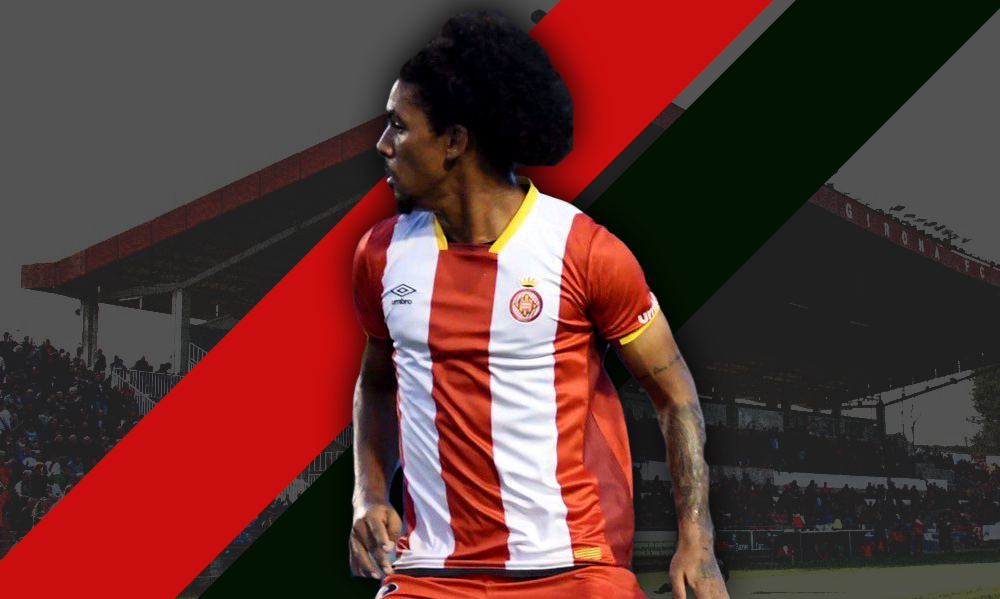Saiguhan Elancheran writes about the importance of triangles on a football pitch and how the shape can be used in many forms to exercise control over a game.

Often we get carried away by investing more attention on the ball while we are watching this beautiful game. We get attracted to star players or our favourite players and tend to miss other stuff such as the shapes formed by the players, the off-the-ball movements, defending in banks and so on.
These parameters, which we as fans fail to witness, are very obvious to a coach. The shapes such as triangles and diamonds are very common in the football language. Such shapes are created by the relationship between the players with each other, the relation between the ball’s position on the pitch to the position of the players, and that of the ball’s movement on the pitch. It is these shapes which occur thousands of times in a single game.
Most of the time we get to witness these patterns only when the commentator points it out. It is difficult to identify these patterns as they are pretty complex to understand.
So what is a triangle? How is it formed?
Consider any three players arranged in a triangle shape. The players are the vertices of a triangle. They won’t be fixed when the formations are plotted but they combine together as the game progresses.
4-3-3 is a prime example of a formation in which this triangular movement can be seen quite often. This is during the start of the game.

Photo credit: www.soccer-universe.com
Here we can witness numerous triangles formed by the combinations of the players.
Triangular Movements
These are movements with two players trying to beat the defender. They are called one-twos(from the number of passes) or triangles(from the geometric shapes of the ball trajectories).
Triangular movements may be of different types. Three players can be stationary, pass between them, and make triangular passes.
In other case, consider three players say A, B and C.

Photo credit: www.footy4kids.co.uk
A passes to B and immediately sprints between the other two players B & C. Player B receives the ball with a trailing leg cushion trap and passes to player C with no more than 2 touches.
Player B now sprints between the new space created by players A & C.
The pattern continues as player C receives the ball and passes to A. Now the triangle will begin to move up the field. One of the most interesting things to note is that of the passer’s off-the-ball movement after passing. “Pass and move” tactic is the key behind maintaining the geometry and functioning of the triangle movements.
Why use the triangle?
We cannot create any other shape using three players with space between them. We can only form triangles or arrange three players in a straight line. But in football, straight lines are dangerous because this is type of spacing is not ideal. Because:
- The players on either side can only pass to the teammate in the middle.
- Only one player in this line has the option of passing the ball to both his teammates.
- The only way that a player at the end of the line can pass to the other end of the line is by chipping the ball in the air or curving the ball around the middle player.
- This is bad for accuracy and requires greater skill to perform, thus reducing the efficiency and probability of a successful pass.
- Hence it can be understood that – only one of the three players has the option to pass to the other two players, while two players can only pass to a single teammate.
Hence this makes the managers to employ triangular movement or spacing the players in a triangle.
Also, the triangular passing should not be confused with the triangular shape i.e. the defensive, offensive or midfield triangles which consists of three players in its vertices. Whereas triangular passing can even be made by two players.
The triangles play a main role in teams whose play is based on possession and teams whose attacks start from the back. But these days almost all the teams employ triangular passing.
Defensive Triangles
Some managers prioritize midfield triangles in their teams to control the game from the center. Jose Mourinho’s famous “Trivote” is one such example. Trivote, which consisted of three central midfielders, is a high pressure triangle which was used by him during his tenure at Real Madrid. Mourinho deployed Pepe as the deep lying midfielder and was quite successful in winning his first Copa Del Rey trophy. What was special about this match was that Mourinho had tactically won the game against Pep Guardiola winning the game 1-0. He got control in the centre by playing the trivote and making Messi ineffective, and asking Pepe to man-mark Xavi thereby disrupting Barca’s attacks. This also left some space in the middle after Barca’s loss in possession which Madrid would exploit.
But Pep got his tactics right to counter the trivote in the famous Champions League semis of 2011 and the trivote didn’t pay dividends as expected.
The defensive triangles can be seen in the teams which play 3 or 5 at the back in most occasions. Here in the 3-5-2, the three players on either side of the wings form triangles to nullify the threats posed by the opposition’s wingers or inside forwards. During defensive transition they even drop deeper, there by leaving minimal space to the winger and even pushing him into the escape zone.
As the game progresses, the split back, say the defensive midfielder, falls behind and the wing backs in the back-four spread wide/move forward in the possession play. And the centre-backs along with the split back and half-backs form defensive triangles.
Offensive Triangles
The managers use the triangles for an offensive approach. For example, no.10 sitting on top of two attacking/central midfielders. The offensive approach of using triangular shape is nothing but triangular passing.
Barcelona under Pep Guardiola won accolades by involving these triangular movements in their possession based play. Here we can witness the players forming virtual triangular shapes with their man in the middle of the field – Messi.
During his stint at Bayern Munich, Pep Guardiola gave a new dimension to the footballing world by bringing in old formations such as playing the 2-3-5, the W-M and the W-W.
The same applies to triangle 3, triangle 4 and so on. In other words, the player in possession has at least two passing lanes for every opposition player who is in a position to press him. This is only possible when they form triangular orientations such as these.
Mathematical advantage of the triangle
If three players form a right-angled triangle then the two players who are positioned at the ends of the hypotenuse are closer to the third player. They have to play the longest pass between each other and short passes with the third player. This leads the defender to run more distance along the hypotenuse and less distance along the other two sides.
Hence forward balls should be played to the farthest player in the triangle which increases the spacing between them. As an effect it becomes harder for the defending team to intercept passes, close down opponents with the ball, and mark the players without it.
The other effect it has is spacing the players of the defending team away from each other so that they cannot keep a compact shape or press in numbers. This reduces more of the game to one on one battles and favours the team who has better technique and tactical organisation to pass the ball and keep possession.
Conclusion
These triangular movements allows the players to take the ball behind the defenders more easily than vertical through balls or long balls and if done at the right moment and with the right speed, they are very dangerous. These can be used as an offensive tactic and also as a defensive tactic to control the game depending on the need of the manager.






























































